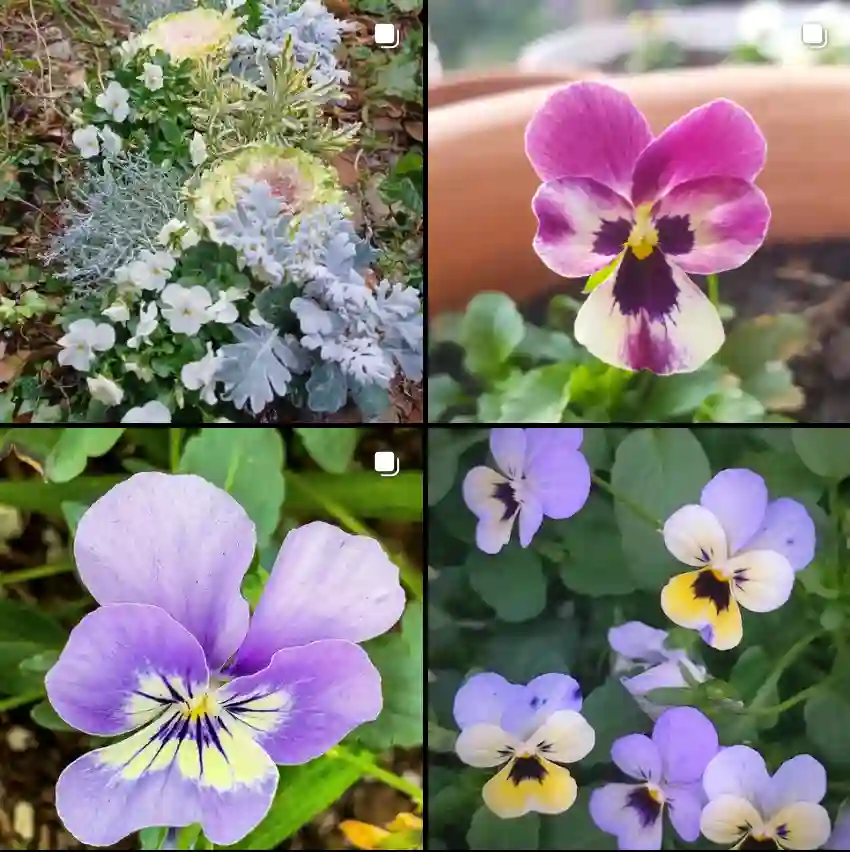
Monstera Spruceana: Unveiling the Allure of This Rare Beauty
Hi, Ferb Vu here, and today we’re diving deep into the world of the enchanting Monstera Spruceana. This tropical gem is a conversation starter, boasting unique foliage and a captivating growth habit. But fear not, plant enthusiasts! As we explore the Monstera Spruceana, we’ll answer all your burning questions and equip you with the knowledge to cultivate this beauty in your own home.
67 Species in Genus Monstera
What is a Monstera Spruceana?
The Monstera Spruceana is an epiphytic aroid, hailing from the lush rainforests of Central America. Like its Monstera cousins, it thrives by clinging to trees and climbing upwards for sunlight. This climbing spirit is evident in its aerial roots, which reach out to secure the plant as it grows.
Key characteristics:
- Unique foliage: Unlike the familiar split-leaf Monstera Deliciosa, the Spruceana features smaller, ovate leaves in its juvenile stage. As the plant matures, these leaves transform, developing beautiful fenestrations (holes) and a lobed structure.
- Climbing habit: The Spruceana thrives with support, whether a moss pole, trellis, or another climbing structure. This allows its aerial roots to anchor and encourages the development of larger, more impressive leaves with dramatic splits.
- Rarity: Compared to its more common Monstera relatives, the Spruceana holds a special allure for collectors due to its relative scarcity.
Monstera Spruceana vs. Deliciosa
Often confused with its more prevalent cousin, the Monstera Deliciosa, the Spruceana possesses some distinct characteristics. Here’s a quick breakdown to help you differentiate:
Monstera Spruceana
- Smaller, ovate leaves in juvenile stage
- Develops fenestrations and lobes as it matures
- Climbing habit thrives with support
- Considered rarer
Monstera Deliciosa
- Larger, heart-shaped leaves
- Develops characteristic splits (swiss cheese plant)
- Can grow independently without support
- More readily available
While both boast stunning foliage, the Spruceana offers a unique charm with its climbing nature and the gradual transformation of its leaves.
Monstera Spruceana vs Subpinnata
Monstera Spruceana and Monstera Subpinnata, both originating from Central and South America, share similarities yet possess distinct characteristics. While Spruceana features larger leaves with deep lobes, resembling its namesake spruce tree, Subpinnata exhibits smaller lobes on its foliage. Spruceana is more adaptable to average household humidity levels and is known for its striking white markings on dark green leaves, while Subpinnata thrives in higher humidity environments and offers a captivating array of green shades. Choosing between the two depends on factors like available space, humidity levels, and aesthetic preferences.
Comparing Monstera Spruceana, Dissecta, and Subpinnata
When observing Monstera Spruceana, Monstera Dissecta, and Monstera Subpinnata, the most pronounced distinctions arise from the size and configuration of their leaves. Among these three, Monstera Dissecta is notably smaller in comparison to the others. Despite this, Spruceana and Subpinnata share certain similarities in size. However, they diverge in their leaf characteristics, with Spruceana boasting extensive leaves adorned with profound lobes, whereas Subpinnata exhibits larger foliage embellished with relatively smaller lobes.
How to care for Monstera Spruceana?
The Spruceana, though captivating, requires specific care to flourish. Here’s a roadmap to ensure your plant thrives:
Light: Bright, indirect sunlight is ideal. Avoid harsh, direct sun, which can scorch the leaves.
Water: Consistent watering is key, but avoid overwatering. Allow the top inch of soil to dry before watering thoroughly.
Soil: A well-draining, airy potting mix is crucial. Consider a mix formulated for aroids or create your own using orchid bark, perlite, and potting soil.
Humidity: Moderate to high humidity is preferred. Grouping plants together, using a pebble tray, or a humidifier can help create a more humid environment.
Fertilizer: During the growing season (spring and summer), a balanced fertilizer diluted to half strength can be applied monthly. Withhold fertilizer during dormancy (winter).
Support: Provide a moss pole, trellis, or other support structure for your Spruceana to climb. This encourages larger, fenestrated leaves and overall healthier growth.
Propagation: Propagating the Spruceana can be done through stem cuttings with aerial roots. Ensure the cutting has at least one node and aerial root before planting it in a well-draining medium.
Common Monstera Spruceana Problems and Solutions
Even with the best care, your Spruceana might encounter some challenges. Here are some common issues and solutions:
Drooping leaves: This usually indicates underwatering. Check the soil moisture and water thoroughly when the top inch is dry.
Yellowing leaves: Overwatering or lack of light can cause yellowing leaves. Adjust your watering schedule and consider moving the plant to a brighter location with indirect sunlight.
Brown spots on leaves: This could be caused by sunburn from direct sunlight or bacterial/fungal issues. Remove damaged leaves and adjust light exposure. For fungal issues, a fungicide might be necessary.
Pests: Mealybugs, spider mites, and scale can infest your Spruceana. Regularly inspect your plant and treat infestations promptly with insecticidal soap or neem oil.
Remember: Early detection and intervention are key to resolving any issues your Monstera Spruceana might face.
With proper care and a little patience, your Monstera Spruceana will reward you with its captivating beauty and lush foliage. So, embark on this exciting journey and witness the magic of this rare and remarkable plant unfold in your home.
If i die, water my plants!



